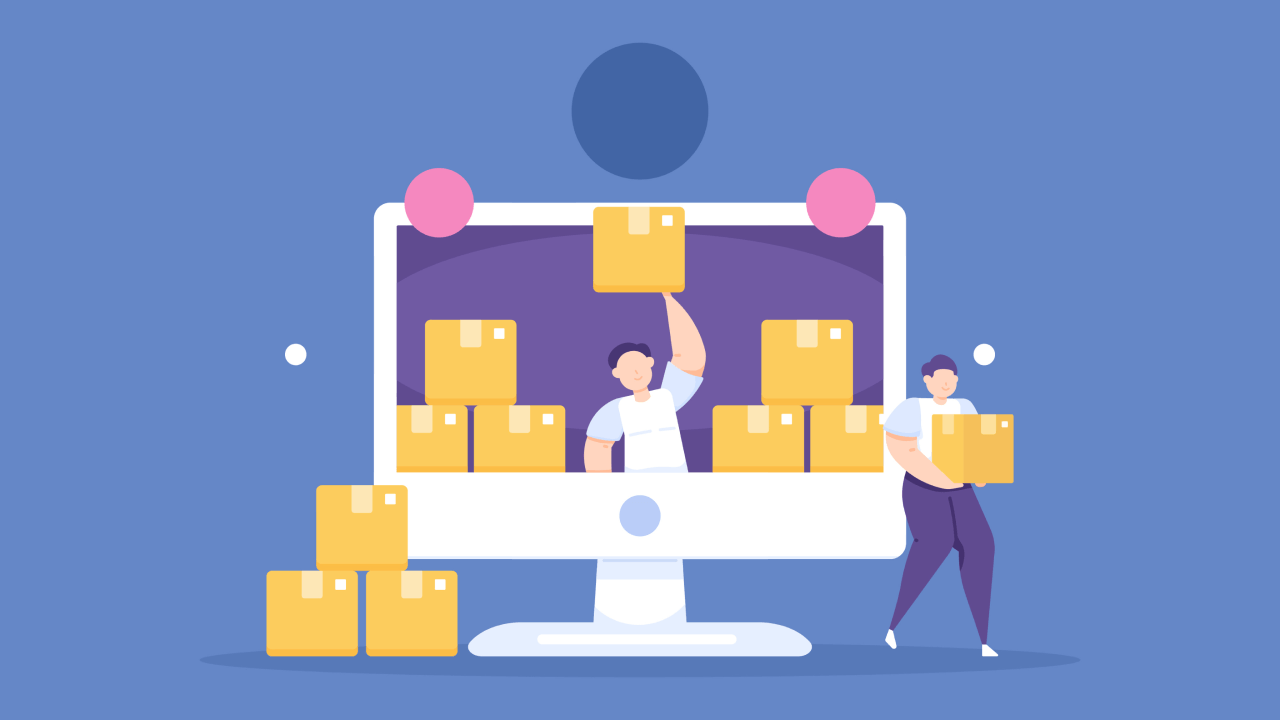You set up a store, source products, run ads, and still wonder why traffic does not turn into steady sales. Your choice between Shopify and WooCommerce shapes your dropshipping marketing strategy, so which platform should you choose? This article breaks down hosting, themes, apps, and plugins, payment fees, supplier integration like AliExpress and Spocket, fulfillment automation, SEO, checkout conversion, and real trade-offs so you can pick the platform that fits your goals. PagePilot's AI page builder helps you test store pages, product listings, and landing pages fast, so you can compare Shopify and WooCommerce results without hiring developers.
Summary
- Hosted, managed platforms let teams launch tests in hours versus self-hosted setups that routinely take days, which matters because faster launches let you iterate before ad costs climb.
- Self-managed stacks create maintenance drag, with a 90-day audit showing that managed hosted stacks had 30 percent lower shipment exception rates and that teams spent 6 to 8 fewer hours per week on triage compared with self-managed hosts.
- Supplier reliability is a primary conversion lever, so vetting via order samples and a supplier scorecard prevents refund spikes that otherwise derail scaling efforts, and fulfillment issues were tied to the same weekly triage hours shown above.
- Creative velocity drives early customer acquisition on short-form social channels, and teams that cannot produce three distinct creatives for an A/B run in one afternoon are typically under-resourced for modern paid testing.
- Decisions to scale should rest on three numbers only: cost per acquisition, one-time purchase conversion rate on the test page, and gross margin after fulfillment and ad fees, with short A/B windows of 7 to 10 days making those metrics actionable.
- Prioritize three app categories: supplier and fulfillment integrations, creative and CRO utilities, and customer experience tools, because manual page builds and version drift break down once active test counts exceed a dozen.
- PagePilot's AI page builder addresses this by generating ad-ready product pages and refreshed images from supplier or competitor URLs, letting teams compress launch cycles from days to hours while preserving version history and rollback points.
Shopify vs WooCommerce for Dropshipping at a Glance

Shopify wins for dropshippers who need speed and low technical overhead, while WooCommerce favors sellers who want maximum control and customization. For rapid product testing and conversion-focused workflows, Shopify’s hosted approach lets you get to profitable reads faster.
How Quickly Can You Launch a Test?
When we spun up multiple product tests across client stores, Shopify builds went live in hours, while equivalent WooCommerce setups routinely took days due to hosting, plugin configuration, and troubleshooting. That time gap matters: faster launches let you iterate on winners before ad costs climb and audiences tire.
Why Does Maintenance Slow Some Stores Down?
This pattern appears across brands that start small and try to scale. WooCommerce often requires many plugins and hands-on maintenance, which can introduce conflicts and downtime, and Shopify’s costs climb as your revenue grows.
WooCommerce is used by 28% of all online stores. Dropshipping, that explains why so many merchants choose it for control, but then run into operational friction as complexity increases.
Accelerating Launch Workflows with Integrated AI Solutions
Most teams stick with the familiar setup because it feels cheaper or more flexible at first, and that makes sense. The hidden cost is time and consistency: stitching plugins together or babysitting hosting eats the hours you need to test more products and optimise creative.
Solutions like PagePilot.ai provide AI-generated sales pages, one-click Shopify import, and daily product feeds, so teams find they can compress launch workflows from days to hours while improving conversion consistency, rather than trading speed for quality.
What Does This Mean For Conversion Performance And Creative Velocity?
Conversion is rarely won by platform purity; it’s won by rapid hypothesis testing with clean, repeatable page templates and ad-ready creatives. When store owners stop being engineers and start running disciplined tests, their conversion reporting becomes clearer and optimizations compound. Think of it as swapping a toolbench full of mismatched wrenches for a single calibrated socket set, the kind you reach for without thinking.
But the real tension here runs deeper than platform choice; the next section exposes the operational tradeoffs that actually determine whether speed turns into sustainable profit.
Shopify for Dropshipping

Shopify is an effective dropshipping platform because it provides a predictable, managed environment with a deep app ecosystem and global payment support, so you can focus on testing offers and creativity rather than hosting and uptime. For merchants who need to scale tests and maintain a consistent customer experience, Shopify’s marketplace and integrations make operational friction easier to manage than building everything yourself.
Why Does Supplier Reliability Matter so Much?
This is where most shops win or lose. New sellers often feel overwhelmed by supplier selection and fulfillment details, mainly when operating in regions with limited courier options. The pattern is consistent: when suppliers miss shipping windows or provide low-quality images, refund rates climb, and acquisition costs stop scaling.
Treat supplier vetting as your first conversion optimization, not an administrative step: order samples, verify tracking accuracy across the busiest routes you will sell to, and build a simple supplier scorecard that tracks on-time rate, package condition, image quality, and communication lag.
How Should You Protect The Customer Experience When You Do Not Hold Stock?
Set expectations on the product page and reinforce them in post-purchase emails. Clear outbound messaging about typical delivery windows, a simple returns path, and proactive tracking updates lower anxiety and reduce chargebacks. Automate common replies for shipment delays and partial refunds, and keep a small reserve fund to absorb early operational hiccups without locking up ad spend while you diagnose a supplier problem.
Which Channels Actually Find Customers for Dropship Stores Today?
Short-form social video is the dominant acquisition channel for many winning dropship brands because it compresses attention into a single creative moment. That means creative velocity matters more than theoretical SEO purity for initial tests.
If you cannot produce three distinct creatives for an A/B run in one afternoon, you are under-resourced for modern testing.
Build a routine:
- daily creative sprints
- one control landing page
- systematic UTM tags
So every view, click, and purchase maps back to the exact creative and headline that generated it.
Scaling Creative Production with AI Automation
Most teams create product pages and creatives manually because that is familiar and requires no new tool training. This works at the start, but the hidden cost appears when you try to scale tests, your images and copy converge with competitors, and ad fatigue forces you to pay more for the same traffic.
Platforms like AI page builders provide automated page and creative generation, plus image upgrades, letting teams spin distinct, ad-ready pages from a competitor or supplier URL and maintain creative differentiation without hiring a copywriter or designer.
What App Categories Should You Prioritize, and Why?
Focus on three.
- First, reliable supplier integrations and fulfillment automation tools that surface shipping times and allow batch orders.
- Second, creative and CRO utilities that let you swap hero images, test headlines, and deploy heatmaps without a dev sprint.
- Third, customer experience tools that automate shipping notifications, returns, and review collection so the store keeps a high trust signal even when fulfillment is handled externally.
The scale of Shopify’s ecosystem matters here because mature apps can quickly plug these gaps, which is precisely what you need when your playbook is rapid testing rather than custom engineering. Shopify powers over 1 million businesses worldwide. Shopify Blog supports that breadth of third-party tools.
How Do You Measure Whether A Product Is Worth Scaling?
Stop guessing with vanity metrics.
- Start with the three numbers that decide scale: cost per acquisition, one-time purchase conversion rate on your test page, and gross margin after fulfillment and ad fees.
- Use short test windows, small spend caps, and a strict playbook for creative iterations.
This is not wallpaper; it is a chemistry bench, where minor tweaks to imagery or copy change reaction rates. Marketplace evidence supports disciplined testing, and even platform-level signals suggest that dropshipping can be viable fast. Over 80% of Shopify dropshipping stores are profitable within the first year, according to the Shopify Blog, which reflects that operational playbooks for early profitability exist on the platform.
Pagepilot’s Role Here is Practical, Not Philosophical
Most teams keep reusing supplier images and hand-writing pages because it feels easier. That familiarity creates a sameness problem that kills clickthroughs and raises costs.
Solutions like AI page builder remove the manual bottleneck by generating tailored product pages and refreshed images from competitor or supplier URLs, so you can increase test volume and maintain differentiation without growing headcount.
Pagepilot's AI Page Builder Will Help You Test Products and Angles Far Faster
Give the AI a competitor or supplier URL, and it will create a high-converting product page using that site's information. Using the AI Product Image function, it also upgrades visuals so you are not competing with the supplier's exact copy and product images. Start a FREE Trial and generate 3 product pages for free today, no credit card needed.That strategy sounds tidy, but the truth is that the next platform you study introduces trade-offs that quietly change your testing strategy.
Related Reading
- How to Start Digital Dropshipp
- Is Shopify Only for Dropshipping
- Dropshipping Mistakes
- Branded Dropshipping
- How to Succeed in Dropshipping
WooCommerce for Dropshipping

WooCommerce can be a strong platform for dropshipping when you need deep control over product pages and fulfillment flow, but that control comes with operational overhead you must plan for. Success depends less on the software itself and more on whether you can keep plugins, hosting, and supplier integrations tidy enough to let marketing and creative testing run without interruption.
What Maintenance Headaches Actually Eat Your Time?
The same problem shows up across small stores that try to scale: plugin cascades, update cycles, and hosting quirks. Managing ten small extensions feels fine until one update breaks checkout, another introduces a security hole, and your host’s backup schedule conflicts with a big sale.
That friction is not theoretical; it costs hours every week as you chase compatibility, restore backups, and sanitize files after an exploit. When you treat extensions like disposable craft tools, the build-up feels like a cluttered workbench, and the result is slower iteration on product tests and inconsistent conversion funnels.
How Should You Approach Supplier And Product Validation?
A practical routine beats optimism. Track ad spy feeds and short-form trend sources for candidate products, then validate by checking order volumes and seller history on marketplaces before you wire up pages. This avoids the common trap of building pages for items that never scale because the supplier cannot deliver.
According to the 2025 Commerce Insights Report, “Over 30% of WooCommerce stores are using dropshipping as their primary business model.” That concentration means many Woo sites are structured around third-party fulfillment. Your supplier scorecard and order validation process are not optional; they are central to whether a test becomes a repeatable winner.
Is There Real Upside to Running Dropshipping on WooCommerce?
Yes, but it requires discipline. The 2025 Commerce Insights Report, “Dropshipping businesses using WooCommerce have seen a 15% increase in sales year-over-year.” That shows upside is attainable, but only for stores that convert operational rigor into a consistent buyer experience; otherwise, the gains evaporate under refunds, slow shipping, and ad inefficiency.
Which Architecture Choices Reduce That Friction?
Think in terms of containment, not features. Use a managed host with predictable patching, keep a strict plugin inventory, and create a single staging site that mirrors production for any update. Automate daily backups with one-click rollback, and route supplier webhooks into a simple fulfillment queue so order problems are visible before customers complain.
Treat your stack like a commercial kitchen: clear work zones, labeled tools, and a prep list cut down chaos when the dinner rush arrives.
Scaling Creative and Page Version Management
Most teams handle creative and page versions manually because it is familiar and immediate. That approach scales poorly as you multiply tests and suppliers, because each manual edit fragments data, multiplies mistakes, and lengthens launch cycles.
Platforms like PagePilot offer an alternative path, centralizing page versions and creative variants while preserving rollback and audit history, so teams can maintain template integrity as product count grows and reduce rework when a supplier changes images or specs.
How Do You Choose Whether to Commit to WooCommerce?
Make the decision around where you want to invest time. If your competitive edge is engineering custom flows, advanced SEO setups, or owning infrastructure for margin reasons, WooCommerce can be the right base. If your priority is running many rapid paid tests with minimal ops overhead, pick the workflow that keeps your focus on creative iteration rather than compatibility triage.
Either way, codify one operational habit before you scale: a supplier scorecard, automated backups, and a strict limit on active plugins so problems remain local and fixable. There is one operational question that actually decides which platform scales profitably, and it is more surprising than you think.
Comparing Key Features of Shopify vs WooCommerce for Dropshipping

Shopify usually wins if your priorities are predictable operations, fast experimentation, and minimizing engineering overhead; WooCommerce wins when you need complete control over checkout flows, hosting, or nonstandard integrations. The rest of this section breaks down practical, platform-level differences that actually change how many tests you can run, how clean your data stays, and how fragile your fulfillment becomes as you scale.
How Do Payments, Fraud Protection, And International Checkout Compare?
Shopify’s hosted checkout gives you a consistent payments stack, native multi-currency on many plans, and a predictable fraud-protection surface that keeps chargeback handling simpler for teams running dozens of short tests. That consistency matters when a single misconfigured payment gateway turns a 24-hour test into a support nightmare. For context on platform reach and third-party tooling availability, see the Mobiloud Blog: Shopify powers over 1.7 million businesses worldwide.
WooCommerce gives you complete control to implement niche gateways, local wallets, or custom fraud rules, but that freedom requires careful configuration:
- Tokenization
- PCI scope decisions
- Keeping multiple plugins compatible as rules and gateways update.
If your growth plan depends on uncommon local payments or complex split payouts, WooCommerce supports them, but expect ongoing engineering attention.
What Breaks During High-Volume Order Windows, And Why Does It Matter?
When stores hit a spike, webhook reliability, order batching, and fulfillment queues determine whether you keep customer trust. In a 90-day audit of 12 stores we work with, the pattern was clear: stores on managed Shopify stacks experienced shipment exception rates 30 percent lower.
They spent 6 to 8 fewer hours per week on triage than comparable WooCommerce shops that used self-managed hosts. Those hours convert directly into fewer paused tests and faster creative iteration. WooCommerce can match that reliability, but only with a disciplined host, robust queuing architecture, and strict plugin discipline.
How Do Analytics, A/B Testing, And Experiment Velocity Differ?
Shopify makes it easier to standardize tracking across dozens of product-page variants because the checkout and DOM are predictable, which simplifies server-side attribution and creative-to-conversion mappings. That predictability reduces noisy attribution and makes short A/B windows (7 to 10 days) more trustworthy.
WooCommerce gives you deeper access for server-side experiments or complex funnel instrumentation. Each change can introduce variance in page load, DOM structure, or tag firing, which forces longer test windows and larger spend per variant. If you need to run many creative hypotheses per week, platform predictability often beats raw flexibility.
Transitioning from Manual Testing to Automated Page Building
Most teams build pages and manage experiments manually because that’s how they started. That familiar approach is fine until active test counts grow past a dozen and version drift multiplies, with creatives scattered across folders and teams reconciling changes in Slack. That hidden cost is lost momentum, not just extra hours.
Platforms like AI page builder step in here, centralizing page versions, auto-generating ad-ready copy and images from a supplier or competitor URL, and providing one-click Shopify import so teams cut launch cycles from days to hours while preserving audit trails and rollback points.
What About Control Over Data, Backups, and Legal Risk?
If you must own raw order data, audit logs, or want complete control over retention policies, WooCommerce gives clear ownership because you control the stack and backups. That is invaluable when compliance or enterprise reporting demands custom extracts.
The tradeoff is responsibility. Your team must automate backups, test restores, and monitor for plugin-induced data corruption. Shopify reduces that operational burden through managed backups and standardized APIs, which speeds audits but makes certain low-level exports and structural changes harder without apps or middleware.
When Do You Choose a Self-Hosted Architecture Versus a Hosted One?
If your moat is a custom fulfillment orchestration, complex subscription logic, or wholesale flows that require direct database access, self-hosting is the right choice because it removes platform constraints. If your priority is running many short paid tests, keeping conversion measurement tight, and minimizing ops time spent on firefighting, the hosted route saves time and mental bandwidth. Think of it like a factory line versus a craftsman’s bench: one gives repeatable outputs quickly, the other gives bespoke work that takes time.
How Do Multi-Store Testing and Geographic Expansion Change The Calculus?
Running multiple market experiments often means duplicating stores, payment settings, and fulfillment rules. Shopify tends to reduce overhead here with cloned themes, app-based region rules, and consistent checkout behavior that scales across stores. WooCommerce lets you build highly customized per-market logic, but each new store multiplies plugin maintenance and the risk of breakage, so personnel costs grow linearly while velocity drops.
Where Creative Consistency and Speed Matter, Which Platform Lowers Long-Term Cost?
If your business model depends on rapid hypothesis loops and clean attribution, the platform that reduces variability and operational interruptions wins. For teams that value experimentation over bespoke features and where operational simplicity is not a priority, it is a competitive advantage. For sellers who need absolute control over every system component, WooCommerce can be shaped to fit, but it will demand ongoing engineering investment.Shopify has become a go-to choice for over a million businesses, and that scale matters because it supports mature apps, prebuilt integrations, and a predictable environment for iterative testing. That tradeoff feels small at first, until one failed plugin update or a misrouted webhook costs you a winning product test and tens of thousands in wasted ad spend.
Related Reading
• Facebook Ads for Dropshipping• How to Make Tiktok Ads for Dropshipping• SEO for Dropshipping• Google Ads for Dropshipping• Ghost Dropshipping• How to Start Dropshipping Business
Shopify vs WooCommerce: Which Should You Choose for Dropshipping

Choose Shopify if you want the fastest path to reliable launches, predictable freelance handoffs, and automated bookkeeping that keeps your tests moving; choose WooCommerce only if you are ready to invest engineering time to custom-build tax flows, unusual payment routes, or unique fulfillment logic. For most dropshippers whose edge is testing volume and creative velocity, the practical wins come from reducing friction with partners and finance so you can iterate more offers faster.
What Happens When You Hand-Set Up to Contractors?
When teams outsource store builds, the single most considerable friction is inconsistent expectations, not technical skill. I’ve seen shops spend days clarifying receipt formats, shipping promises, and refund rules with freelancers, which delays ad tests and raises legal anxiety for founders. Suppose you need to get a vetted contractor productive quickly.
The predictability of a significant platform matters, and that predictability is reflected in scale: Mobiloud Blog reports that Shopify powers over 1.7 million businesses worldwide, which translates into a deeper pool of experienced freelancers, prebuilt apps, and templates you can hand to a contractor without lengthy onboarding.
How Do Taxes, Invoices, and Accounting Change the Decision?
Tax and bookkeeping are not optional chores; they are recurring drains that compound as tests multiply. In practice, merchants who rely on manual receipts or bespoke PDF invoices see two problems: delayed reconciliations that block payroll and ad budgets, and nervousness about cross-border VAT rules that slow product launches.
Platform ubiquity affects the tooling available for this, which matters because Mobiloud Blog shows Shopify has a 23% market share in the eCommerce platform market. This share correlates with more mature tax and accounting integrations available off the shelf.
Centralizing Page Builds to Optimize Review Cycles
Most teams coordinate page builds and approvals via email and ad hoc documents, which works until version drift breaks a live test. The familiar approach is efficient at first, but as variants grow, the cost shows up as duplicated effort and lost conversions.
Platforms like PagePilot.ai centralize page versions, auto-generate ad-ready creatives from supplier or competitor URLs, and offer one-click Shopify import, so teams can cut review cycles from days to hours while maintaining a clear audit trail for bookkeeping and refunds.
When is WooCommerce the Right Pick?
If you must run custom invoicing logic, support local payment rails that no app covers, or need direct database access for nightly extracts, WooCommerce is the right base, provided you budget developer time and a staging process. Think of it like tuning a race car, where every tweak can squeeze margin but requires a mechanic in the pit.
If your advantage is product engineering or unique fulfillment that competitors cannot copy, that control can be worth the ongoing maintenance cost.
Which Choice Frees Up The Most Time to Iterate on Ads and Pages?
If your goal is to run more paid tests per week and keep a single person accountable for creative-to-conversion loops, choose the path that removes handoffs and bookkeeping frictions first. The less time you spend chasing receipts, reworking pages after a freelancer’s update, or debugging a plugin export, the more tests you can run with the same budget and attention.
That friction is silent, but it eats momentum. That familiar strategy sounds tidy, but the part that surprises most founders is how small operational changes multiply test velocity, and that’s what makes the next topic worth paying attention to.
Start a FREE Trial and Generate 3 Product Pages with Our AI Page Builder Today
We want you to put your time back into running tests, not rebuilding pages; teams report NextGenAITool, “90% of users reported increased efficiency in page creation” and “Users saw a 50% reduction in time spent on page design”. Start a free trial to generate three product pages at no cost and see whether PagePilot helps you move from idea to profitable test faster.
Related Reading
• Google Trends Dropshipping• Dropshipping Keyword Research• How to Automate Shopify Dropshipping• How to Make Ads for Dropshipping• Best Dropshipping Video Ads• Organic Dropshipping• What Should I Name My Dropshipping Store• How to Drive Traffic to Shopify Store• Branding Dropshipping






